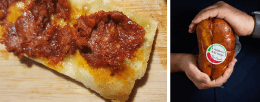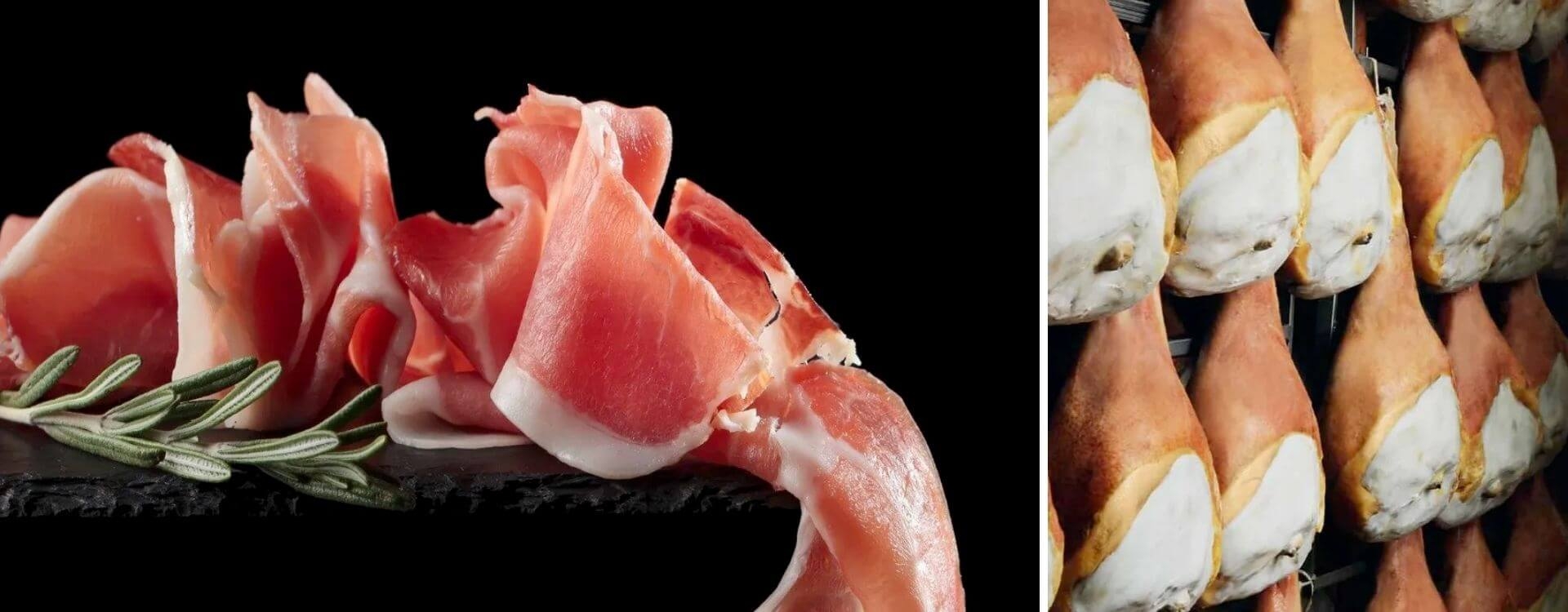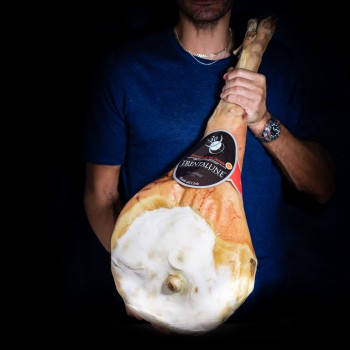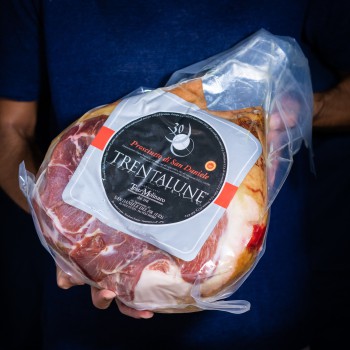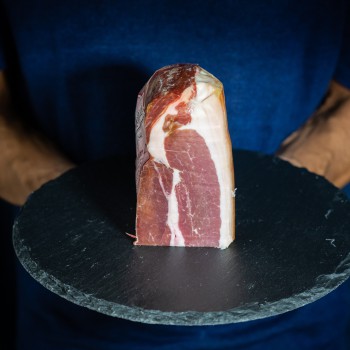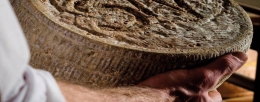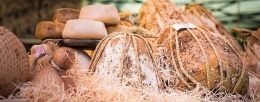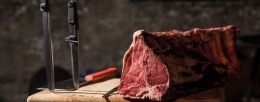Ferragosto is approaching, whip out the picnic baskets! What are we taking? All quick preparations to make and practical to carry and eat - dishes and cutlery are hardly needed! The secret? The best Italian cured meats.
San Daniele ham: the culture behind this delicacy from Friuli
Dry-cured ham is one of the most ancient cold cuts and San Daniele ham is the highest expression of a tradition that is more than a century old. San Daniele is a small municipality in the hills of the province of Udine. Here, where North-Eastern winds blow from the Carnic Alps to the Adriatic Sea, a unique and exceptional ham is made.
This ham obtained the protected designation of origin in 1996, which means that a production area has been determined and the whole production process must comply with the rules specified in the product specifications.
However, the story of San Daniele ham is much older. It was first mentioned way back in 1453, when a doctor from Friuli, Geremia Simeoni, talked about the role of meat in the human diet in his work De Conservanda Sanitate and said that “the lean parts of domestic pigs can be preserved in salt and eaten as a starter”. That means that prosciutto already existed in the middle of the 15th century.
The Council of Trent was held in 1563; chronicles of that time reported that priests ate “thirty hams”, the majority of which came from San Daniele and were transported to Trent on the back of mules.
In 1797 Napoleon’s troops entered the city of Udine. They seized many goods and, besides money and the silverware of noble families, soldiers also took the precious manuscripts of the Guarnieriana library and … many San Daniele hams with them.
In 1866 Friuli was annexed to the Kingdom of Italy and the fame of San Daniele ham spread to other parts of Italy, reaching European palaces, too. From that moment on, the success of San Daniele never came to a halt.
The Consortium - which was founded in 1961 and now counts 31 members - aims at promoting San Daniele ham, guaranteeing its quality and protecting it from counterfeiters. The trademark was adopted in 1972, but it was only in 1990 that a law stated that only hams that had been approved and branded by the Consortium could use the name “San Daniele”.
Finally, the official recognition came in 1996, as San Daniele dry-cured ham was awarded with the PDO label.
Nowadays, 2,600,000 pork legs are processed, with a turnover of € 310 million, showing an increase compared to the previous year. Export (4,200,000 kg of ham) is the most profitable activity and the main export destinations are France, USA and Germany.
How is San Daniele dry-cured ham made?
Let’s start by talking about pigs: pigs are born, reared and slaughtered within the production area indicated in relevant product specifications. Only heavy pigs weighing on average 160 kg are allowed. Pork legs must weigh at least 13 kg and are kept for 24 hours at a temperature ranging from -1°C to +3°C and the fat is then trimmed.
The next step is salting which allows preserving meat in a natural way and keeping its flavour unaltered. Pork legs are then covered in sea salt and then left to rest, according to tradition, for a period corresponding to their weight - one day for each kilogram.
Afterwards, the ham is pressed. This step is carried out exclusively in the case of San Daniele ham, and gives it its signature guitar shape.
It is now time to let the hams rest in appropriate cellars with a temperature between 4°C and 6°C and a humidity level ranging from 70 to 80%. This period lasts for at least four months which gives the salt enough time to penetrate into the ham in an even way.
The next step consists in washing the leg with lukewarm water which helps getting rid of excess salt and toning the meat tissues. The maturation period starts now. Maturation must take place within the San Daniele municipality and must last at least thirteen months since the beginning of processing. Aging premises must be well ventilated with controlled humidity and temperature.
In order to avoid drying out the meat, the ham undergoes a smearing process: the exposed portions of the ham that are not covered by the rind are smeared with a mix of lard and rice flour.
Moreover, each pork leg is individually checked to assess its level of maturity. The so-called beating step consists in striking the rind in order to assess the meat consistency; the leg is then pierced with a thin and very porous horse bone into several areas. This step is essential and requires expert hands and noses that can evaluate the level of maturity of the product, by smelling its aroma.
After the maturation period, hams are monitored by an Independent Certification body, under the supervision of the Ministry of Agricultural, Food and Forestry policies. After they have been fire-branded, hams are ready to be distributed for sale.
Testa & Molinaro
This company is beyond excellent: it was born in 1941 out of the combination of two ham makers, Testa and Molinaro. It is now the Fantinel family that leads the company and keeps this tradition alive. In their two facilities in San Daniele, craftsmanship is combined with advanced technologies.
Testa & Molinaro’s San Daniele dry-cured ham is so delicious, because the whole production cycle is thoroughly checked. Pigs only come from a controlled supply chain and are fed with a natural GMO-free diet. The meat is prime-quality, which is a very important detail.
It is then the talent of ham makers that make the difference. The secret behind this ham is an accurate processing, a long wait and a unique microclimate for maturation.
Testa & Molinaro offers several selections of hams with different maturation levels and hence, different flavours and aromas. Alta Salumeria is the San Daniele ham that ages between 14 and 17 months and has a sweet and soft flavour. On the contrary, the Trentalune ham ages between 18 to 20 months and is ideal for fine palates.
San Daniele ham in the kitchen
San Daniele dry-cured ham is one of the Italian cold cuts with the highest quality. It can be easily spotted thanks to its signature guitar shape, but it is by tasting it that you understand why it is so famous. The flavour, which becomes more lost-lasting as aging progresses, is sweet and soft, delicate but also sapid at the same time.
To the palate it is tender and not stringy. The consistency is unique: this ham melts in the mouth, without being too tender.
Fat is an essential part of ham; without the fat, the lean meat inside the pork leg would become too dry during maturation. The outside layer of fat must measure at least one cm and a half, while the intramuscular fat inside the pork leg should create a white and not too dense marbling which is, however, very visible.
What does San Daniele ham pair well with? It can be paired with different foodstuffs that are able to enhance its unique taste, without cooking it.
An alternative to prosciutto and melon could be prosciutto and figs. The sweetness of fruit complements the sweet notes of ham, while contrasting its sapid flavour.
Ham and cheese is a classic combination: it is ideal with fatty cheeses, especially Provolone and Taleggio.
I reckon that the best combination is San Daniele ham with bread or flatbread, especially with nut, multigrain or cereal bread that add that crunchy note which contrasts very nicely to the consistency of soft ham.
San Daniele ham truly is an exceptional product, full of flavour and history. It is one of the pillars of the tradition and craftsmanship of the Friuli region. We only choose the best; our palate will thank us.























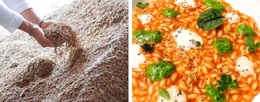
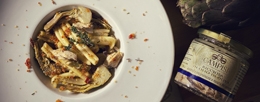


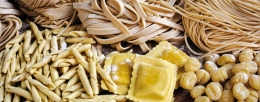

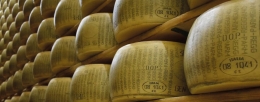
.jpg)
